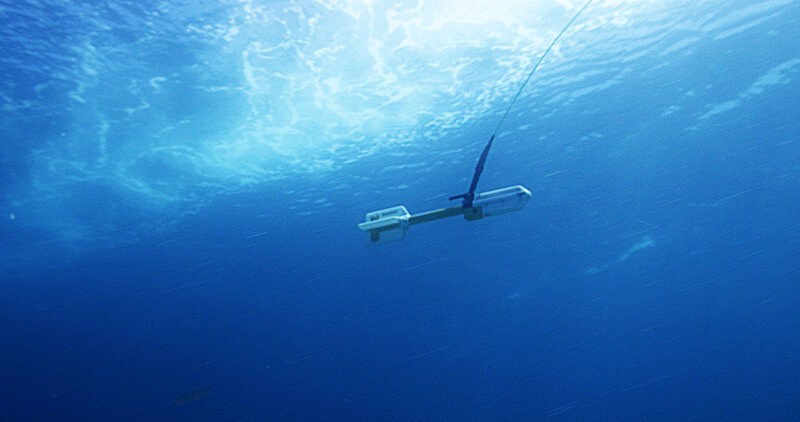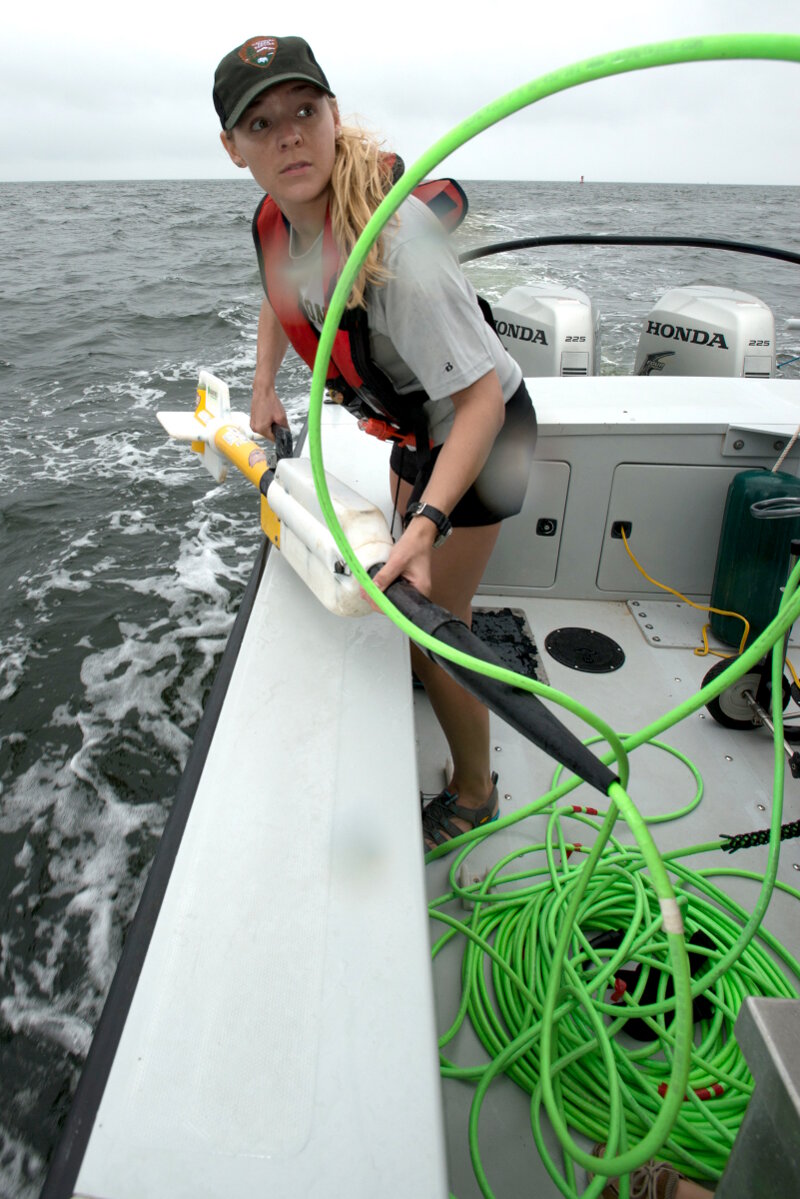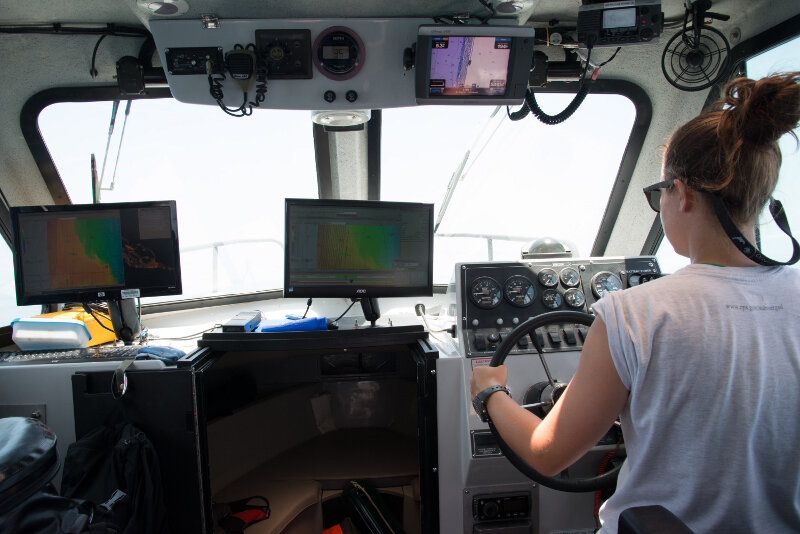
By Bert Ho, Senior Underwater Archaeologist - National Park Service
As we started the research design for this expedition to search for Battle of Midway sunken aircraft, Dr. Kelly Keogh and I discussed some of the previous survey instruments used at the atoll and their pros and cons.

Magnetometer being towed through the water column. Image courtesy of Brett Seymour, National Park Service Submerged Resources Center. Download larger version (jpg, 760 KB).
From our experience working in the waters inside and outside the reef at Midway, we know that the bottom is generally a hard bottom with coarse sand and jagged reefs that grow in all sorts of shapes. Areas of the ocean with bottoms like this generally obscure cultural material with concretions, and if it’s a wooden shipwreck, usually most of that wood disintegrates in the marine environment, leaving only the metal artifacts.
In deep water or where the seafloor is generally uniform and sandy, sonars that produce imagery from sound are very useful and effective in detecting lost objects. They produce a picture of the seafloor generated from the shadows formed by sound returning to the instrument and sound not returning.

National Park Service archeologist ready to deploy the magnetometer during survey operations. Image courtesy of Susanna Pershern, National Park Service Submerged Resources Center. Download larger version (jpg, 2.5 MB).
Shipwrecks, airplanes, geology, and other material that stand out from the seafloor all can create shadows that identify what they are to the surveyor. This type of sonar, called side scan sonar, is now regularly used in many fish finders that fisherman use to locate rock outcrops or ledges where fish may live. It is very effective at discovering shipwrecks, rocks, or other sunken material on flat seafloors or lake bottoms.
However, at Midway Atoll, the shapes that the coral grow into often obscure and distort the imagery returned from side scan sonar. Material culture left behind from a plane may only consist of an engine block, some jagged aluminum or steel, or landing gear. When seen in sonar, these features often resemble the environment they are in and the jagged coral forms. In these types of marine environments, looking for the ferrous, or iron, material is the best way to locate the cultural or man-made material. For this, we need a marine magnetometer.
A magnetometer, in its most basic definition, detects changes in the Earth’s magnetic field. Earth has a magnetic field that is generated by the molten iron that is swirling in Earth’s outer core. The strength of the magnetic field can be measured, and it varies throughout the Earth’s surface.
As we tow a magnetometer through the water, it is constantly measuring the magnetic field (usually at one Hertz, or one reading per second during surveys, but it can also measure many times faster if needed), which generally is stable and increases or decreases gradually across the surface. If something ferrous in the water, like a large historic cannon, a large anchor, or even an engine block is detected, the readings will deviate very quickly.

National Park Service archeologist driving survey lines collecting magnetometer data. Image courtesy of Bert Ho, National Park Service Submerged Resources Center. Download larger version (jpg, 1.4 MB).
Depending on the distance the magnetometer is from the iron object, the reading could deviate very far or slightly from the stable readings before and after the magnetometer encountered the object. We call these deviations anomalies. We understand that even small anomalies can represent significant historic artifacts, so we must be systematic when investigating these anomalies, and treat each one with importance.
Depending on the depths that the anomalies are located, we can investigate them with divers or with remotely operated vehicles. For Midway, we plan to survey in the shallow waters where we have first-hand witness accounts of downed aircraft during the battle. We will process the magnetometer data each night to locate our anomalies, enter their locations into a GPS, and finally investigate as many anomalies as we can with divers on SCUBA. We believe the magnetometer gives us the best chance to be successful in finding some of the lost aircraft of the Battle of Midway.